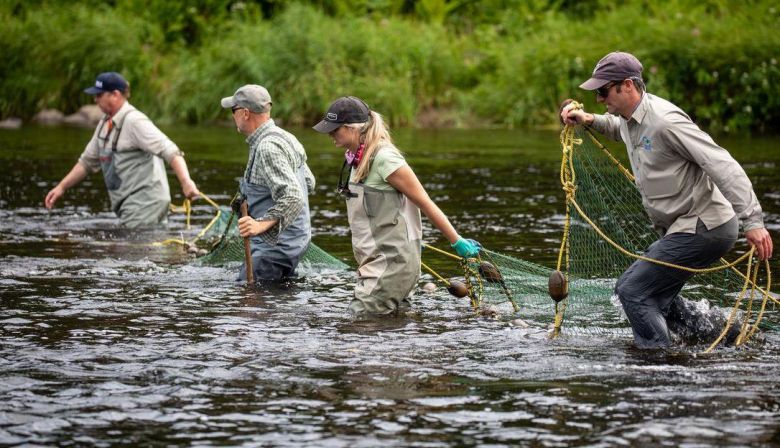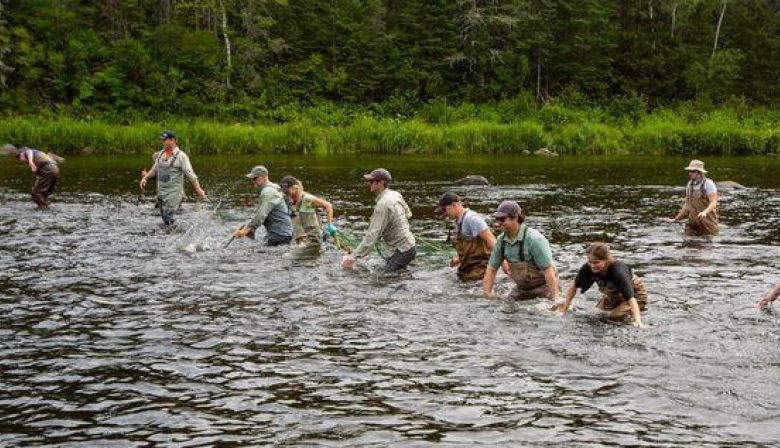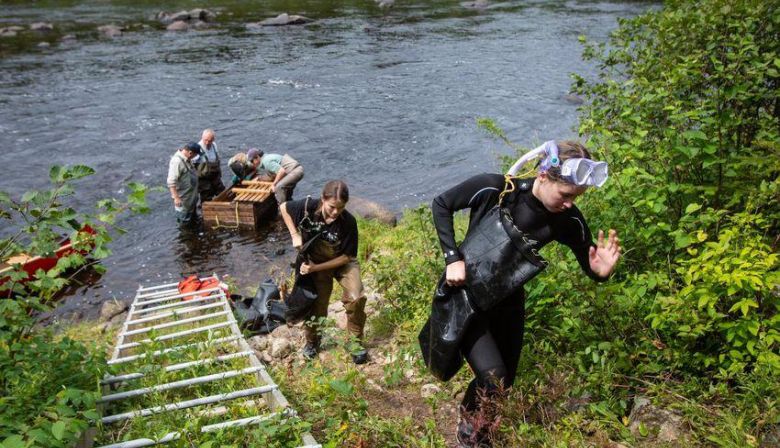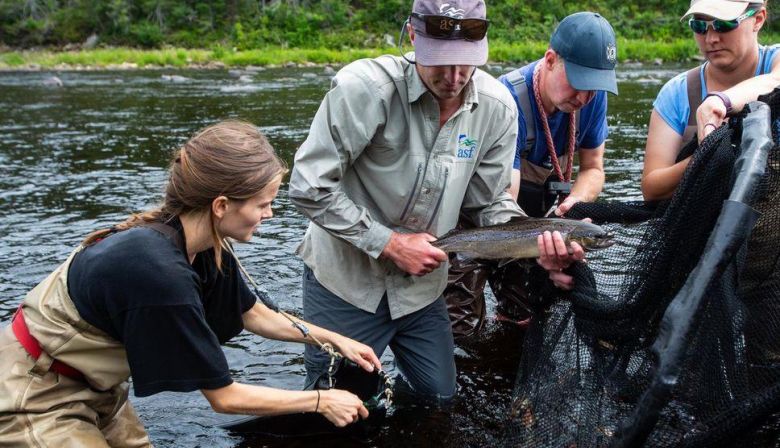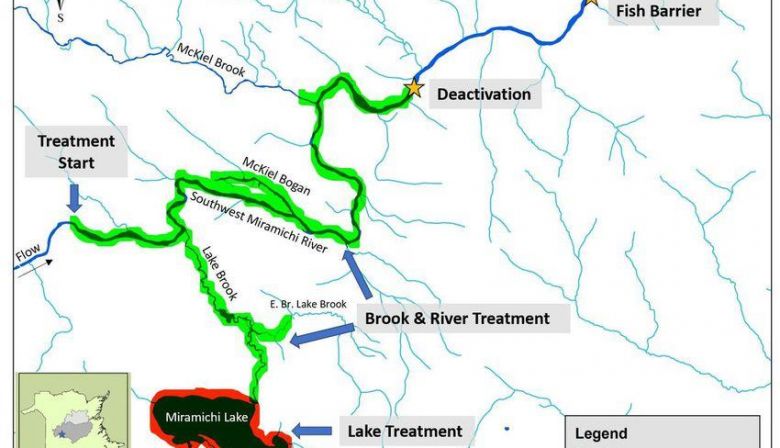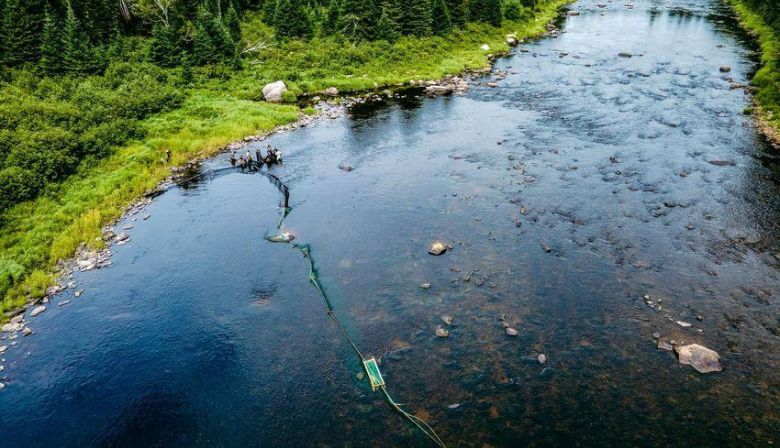After about 15 minutes, the first of the fish affected by the toxin will float to the surface. More will drop to the lake and river beds. Those that float will be gathered eventually up by crews and buried in pits dug for the purpose.
That’s merely for the benefit of homeowners around the lake, however. The scavengers that would gather to feed on the dead fish — eagles, ospreys, kingfishers and bears — would not be harmed by eating them. Although rotenone shows low toxicity for mammals, experts advise against eating the killed fish.
Over the next several days, the water will be monitored closely, assuring that the rotenone is breaking down as anticipated.
Back on the Miramichi, several kilometres downstream from where they were netted, Neville Crabbe and Caleb Koch cradle sleek, speckled salmon in the river’s flow, helping them recover from the stress of being transferred from their earlier home.
The water is ideal for them here; shallow on the bank where they are released, deeper and colder on the far side of the small, fast-moving current that divides the river. Koch and Crabbe move the fish gently in the water, helping them find their fins again.
Upstream, about 100 metres, is the recently erected barricade that prevents them from returning to their soon-to-be inhospitable home.
At some point in the near future, it will be determined that their former haunts are safe for them; crews will come and remove that barricade and they will be able to return to their old stomping … swimming … grounds.
But for now, unaware of the massive, multi-year, multi-organizational effort to keep them safe, they rest temporarily, seemingly content to relax for a moment in trusted, helping hands.
And then, suddenly, a flick of a tail, a flash of silver, a splash of water. And they’re gone.
Leaving only smiles in their wake.
